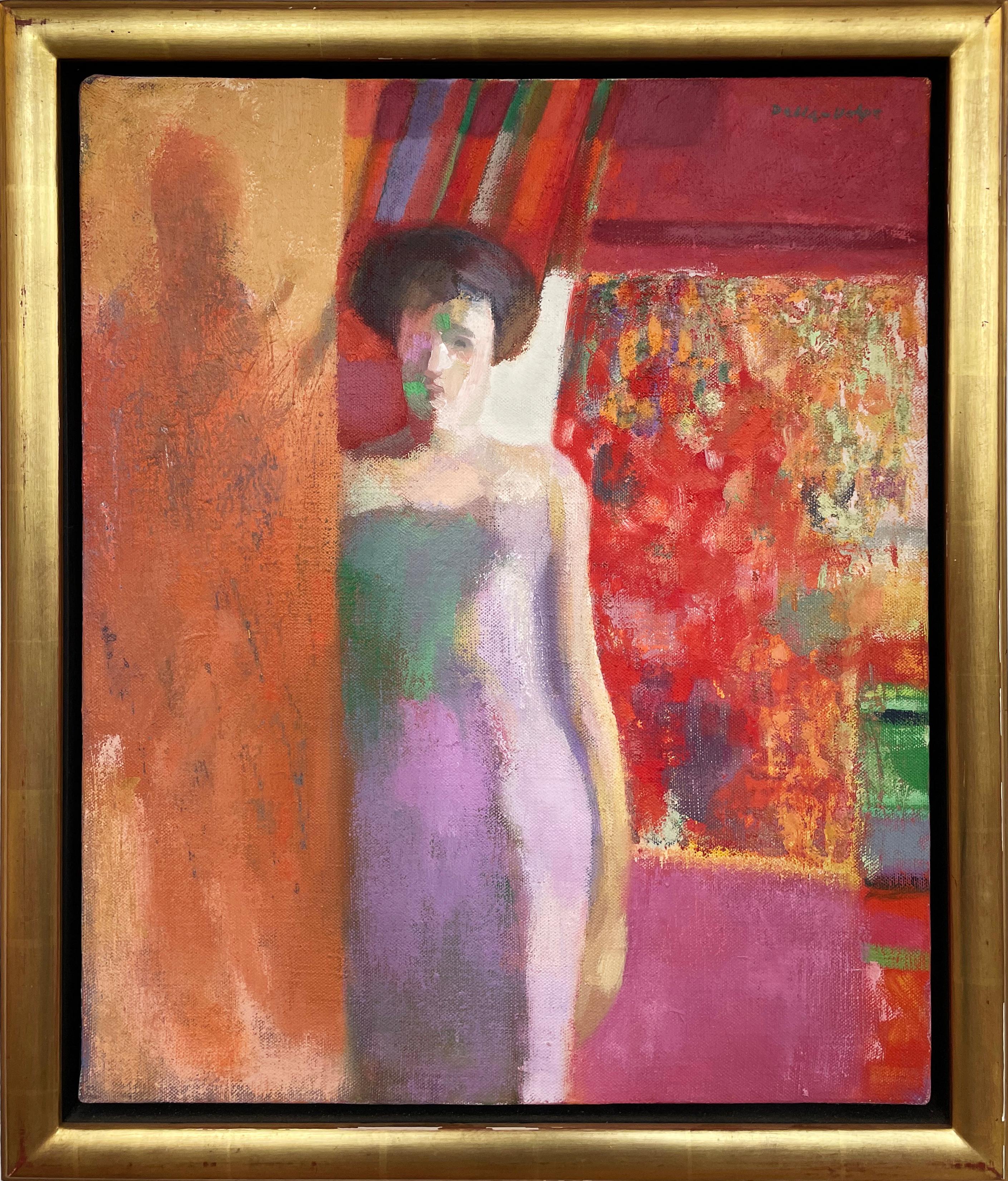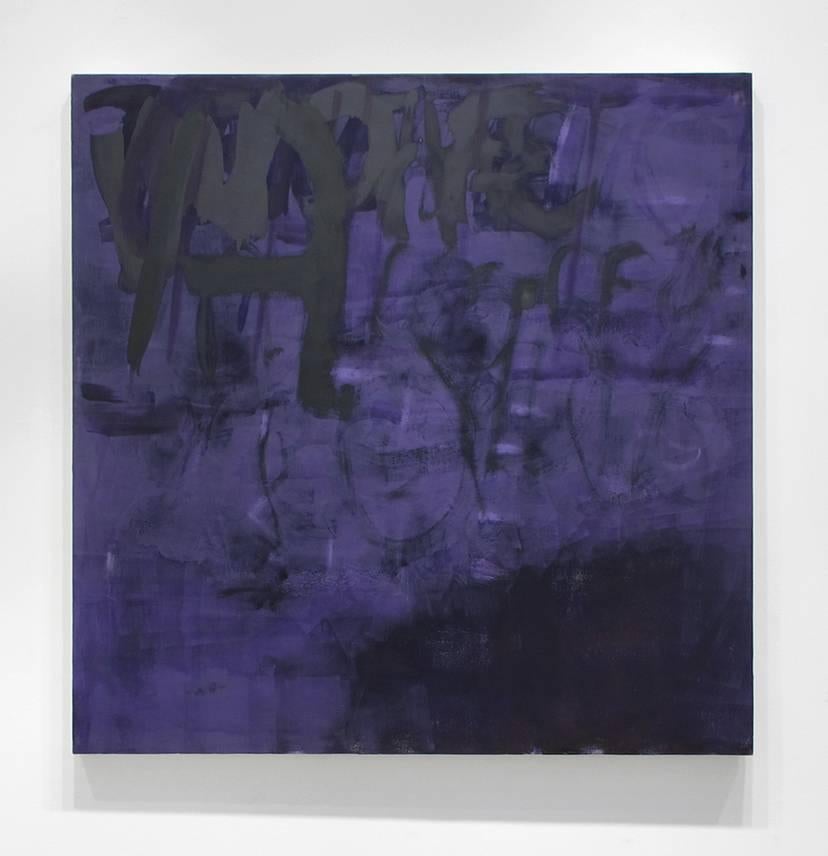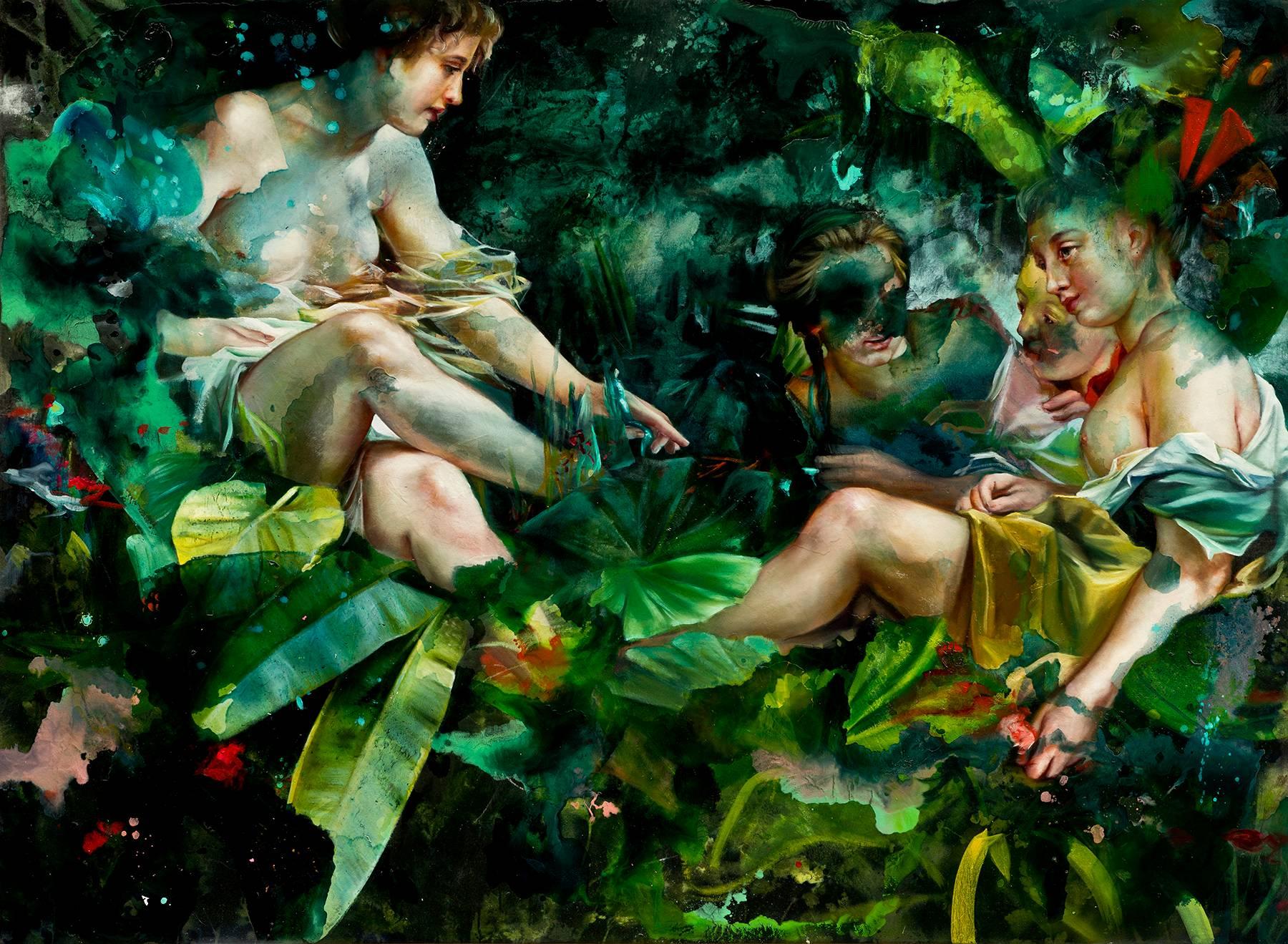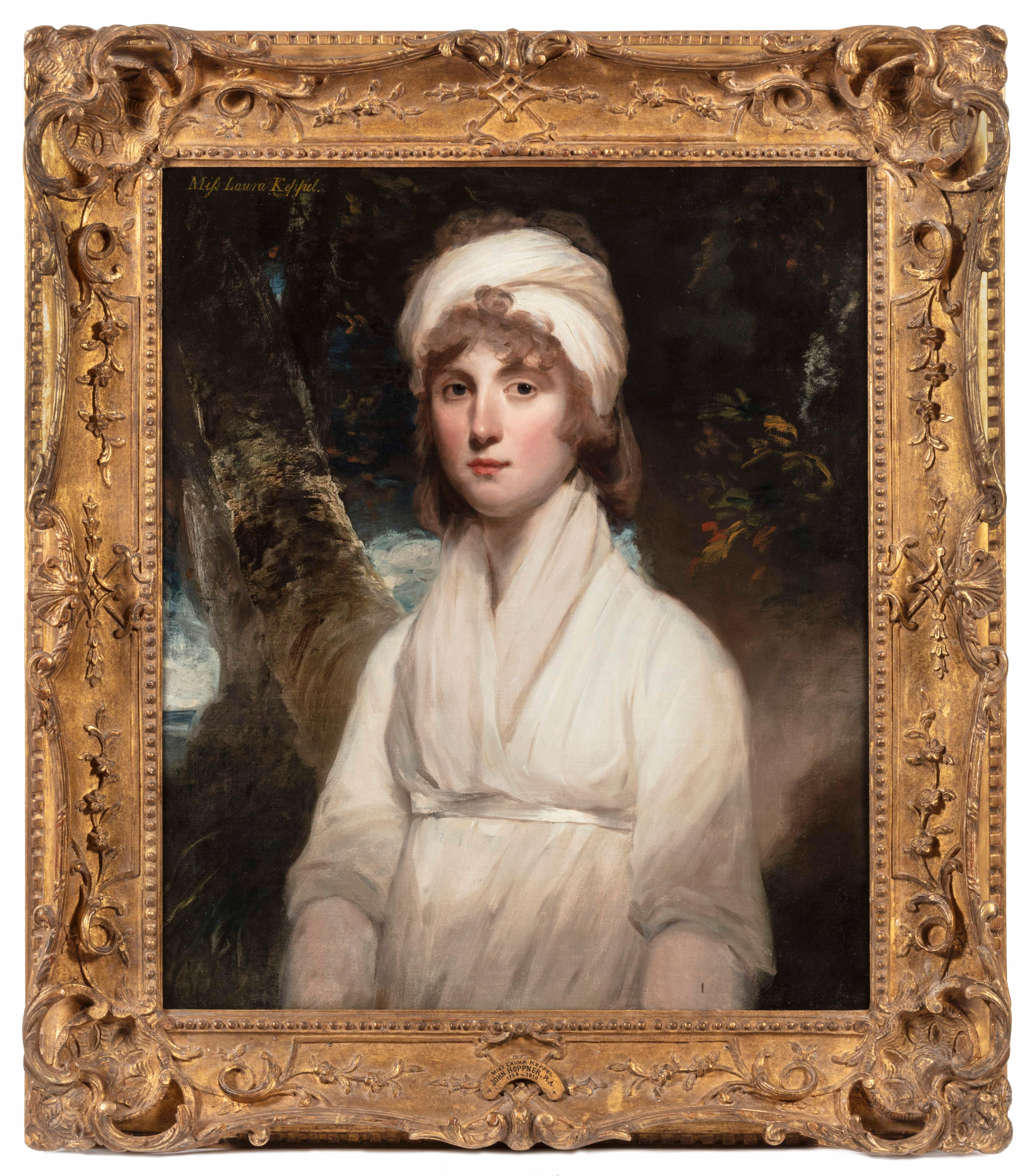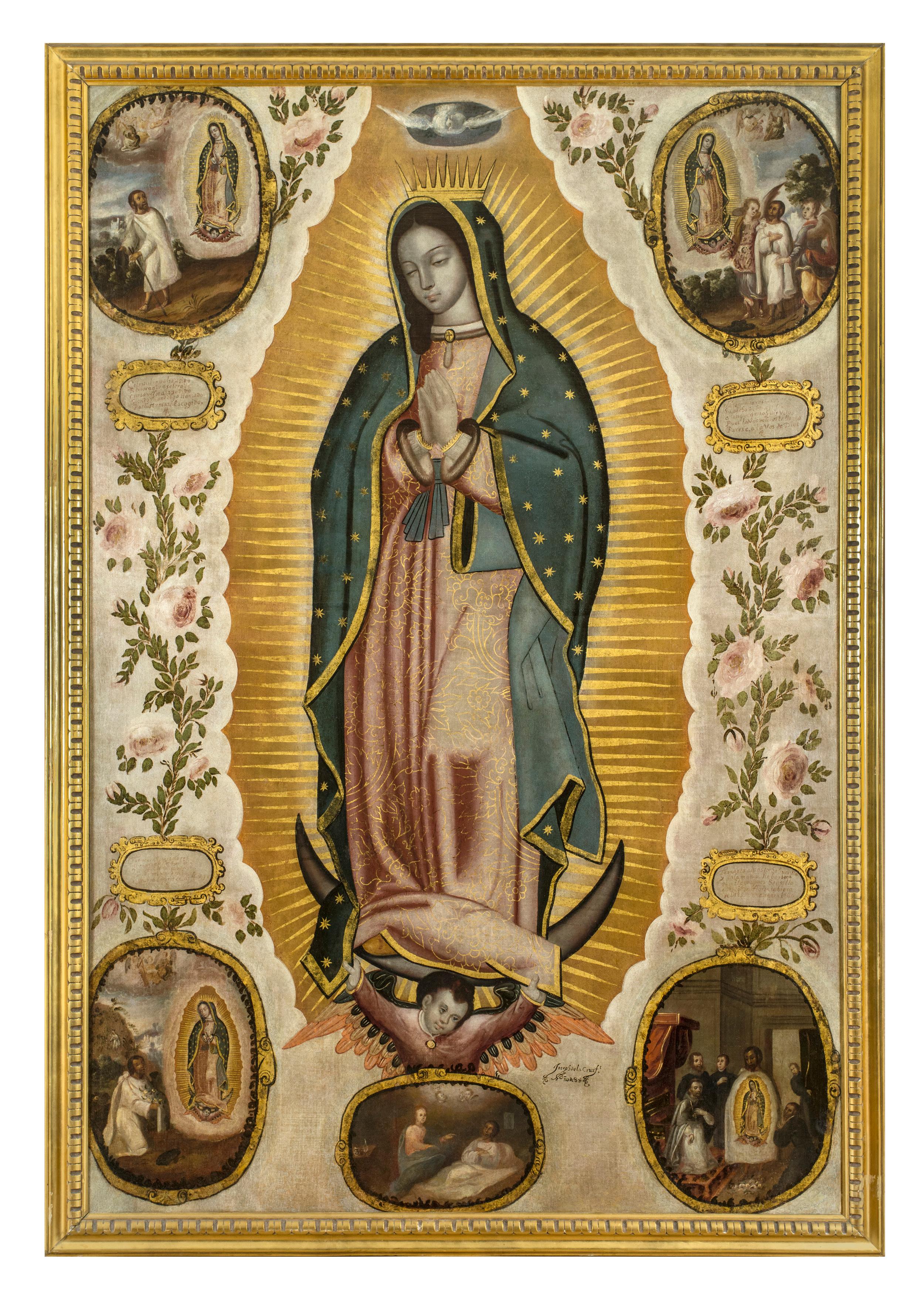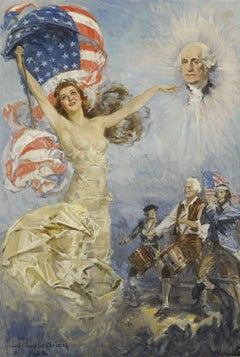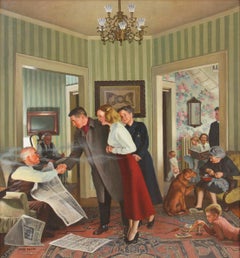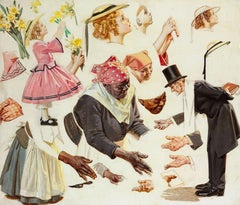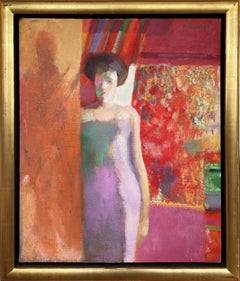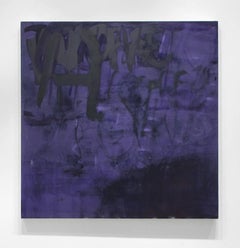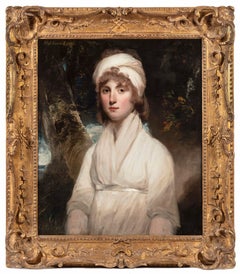Frank J. Reilly (1906-1967) was noted as "the number 1 art teacher in America." Reilly is noted for developing a means of organizing the palette. His value studies and chroma organization are still taught as the primary methods of oil paint organization. Reilly studied with Frank DuMond at the Art Students League of New York. He taught at the Grand Central School of Art, The Art Students League of New York and other art schools as well as establishing his own art school. Reilly was the main influence on George Passantino. He is credited with the mosaic mural in The Bronx High School of Science's front lobby. Reilly's influence continues today through the teaching and art of Michael Aviano and Jack Faragasso as well as their students Jon deMartin and Graydon Parrish.
The Legacy of Frank J. Reilly
by Jack Faragass, from LINEA
Journal of the Art Students League, Summer 2006
One of the most maligned and misunderstood artist-instructors of the Art Students League was the late Frank J. Reilly. This article will attempt to explain why.
Mr. Reilly taught at the League from 1940 to 1964 when, due to policy differences with then executive director Stewart Klonis and the school's Board of Control, he resigned and set up his own art school in the Steinway Hall building on West 57th Street. Unfortunately, he died shortly thereafter putting an end to his grandiose plans and preventing him from seeing the full blossoming of his teaching. Mr. Reilly was a feisty Irish-American endowed with great energy and charisma. He inspired fanatic devotion and loyalty from his students. His classes were always jam-packed morning, afternoon, and night. On his off days he would drive to the League's studios in Woodstock, New York to teach landscape and outdoor figure painting. Somehow he found time to do illustrations, write articles on art, conceive and work on murals, and do an occasional "fine art" easel painting. Married but childless, Mr. Reilly regarded his pupils as his family and sought to relate to them as such. He sought to give them the best training possible, and in order to introduce them to the art world, arranged contests with national magazines, paper back publishers, and even Portraits, Inc.
I know him and his ideas very well as I was a student of his in one class or another from 1949 to 1954, both here and in Woodstock. In those days his student concourse filled the entire second floor gallery. The walls were hung with many excellent figure paintings and drawings, portraits, landscapes, still lives and illustrations. So what was the problem? In my opinion, the great quantity and quality of the work generated jealously and animosity among certain instructors and their students. They regarded representational art as passé, not creative, nonintellectual, devoid of emotion, and absolutely revolting. Once in a fit of anger, a fellow instructor (who shall remain nameless) threw a punch at Mr. Reilly while passing him in a hallway. Another time an instructor, while passing Reilly's studio, yelled "Mud. Mud. Mud." Such was (the hatred among the different schools of thought and painting in those turbulent (and glorious) days of the fifties.
Frank J. ReillyIn the days when representational art was practically extinct, Mr. Reilly was a beacon, a link with the great traditions of the past leading far back to the founding of the Academic Royale in 1648. He once told me that he realized he could never be regarded as a great artist but that he could go down in history as one of the greatest teachers of drawing and painting and that is where he directed his energies. Mr. Reilly was linked to three influences.
Mr. Reilly's links to the French academy were his mentors, George Bridgman and Frank Vincent DuMond. Bridgman had studied in Paris with Jean-Leon Gerome (1824-1904), who had studied with Paul Delaroche (1797-1856), who had studied with Ingres (1780-1867), who had studied with Jacques-Louis David (1748-1825), who had studied with Joseph Marie Vien (1716-1809), who had studied with Charles Joseph Natoire (1700-77). DuMond studied with Gustave Boulanger (1824-88), Jules-Joseph LeFebrve (1836-1911), and Benjamin Constant (1845-1902), who had studied with Ingres. A third influence was Dean Cornwell, a prolific artist and the most highly regarded illustrator of his time. During the period 1915 to 1927 he painted over one thousand illustrations, many of them quite large with myriad figures. Cornwell received many awards and honors and executed many large murals both here and abroad.
At one point in his career Mr. Reilly spent several years in London studying and working with Frank Brangwyn, a great etcher draftsman and quite possibly the century's greatest colorist. (I know, you never heard of him.) Cornwell also learned from Harvey Dunn, a student of Howard Pyle, the founder of the school of American illustration. Pyle also taught, among others, N.C. Wyeth thereby starting the Wyeth lineage of artists. Incidentally, I'll bet you didn't know that Vincent van Gogh aspired to paint like Howard Pyle. Mr. Reilly and Dean Cornwell were friends who lived in the same building on Central Park West, and naturally they had much to discuss with each other. From Cornwell, Reilly absorbed his and Brangwyn's ideas on color harmony and composition.
As for the artists of the past, Reilly's favorites were Velazquez and Sargent. This, mind you, was long before the ever-mounting praise now heaped on Sargent. Reilly also had good things to say about Frank Duveneck for his painterly brushwork, Jean-Jacques Henner for his softness, Puvis de Chavannes for his decorative compositions, and African wood sculptures for their emphasis on planes. It was from all these influences and many other minor ones that Mr. Reilly derived his teaching methods and program, as he once said, "all that has been judged as historically good in drawing, painting, and picture making." At one point he and DuMond taught together but soon split up due to philosophical differences. "You tell them too much," DuMond said. "They won't thipk for themselves." And I admit there is something to be said for that. Trouble is there is far too much to think about, and beginners don't think about much these days. Nor can beginners draw well or see chromas and values, all of which have to be learned. Was it so bad to teach these things to beginners? I'm amazed at how many of them have come to me saying they know how to draw, they just want to paint. Perhaps it is due to the fluoride in the water or aluminum deposits between the brain's neurons, or perhaps it is due to watching too much MTV.
There were objections to Mr. Reilly's teachings Mr. Reilly taught with what he called a "universal" palette, where every nuance of hue, value, and chroma could be mixed. This was based on the work of Albert Henry Munsell who was commissioned by the US government to come up with a system of color notation that could be used to precisely designate the color of any object, animate or inanimate. So with the Reilly palette everyone's complexion could be mixed-as well as the colors of the draperies, interiors, etc. Mixing the complexion tones is one thing, which ones
Biography courtesy of:
Soceity of Illustrators Bulletin: Vol 66-No 3 . Fall 2006-Winter 2007
